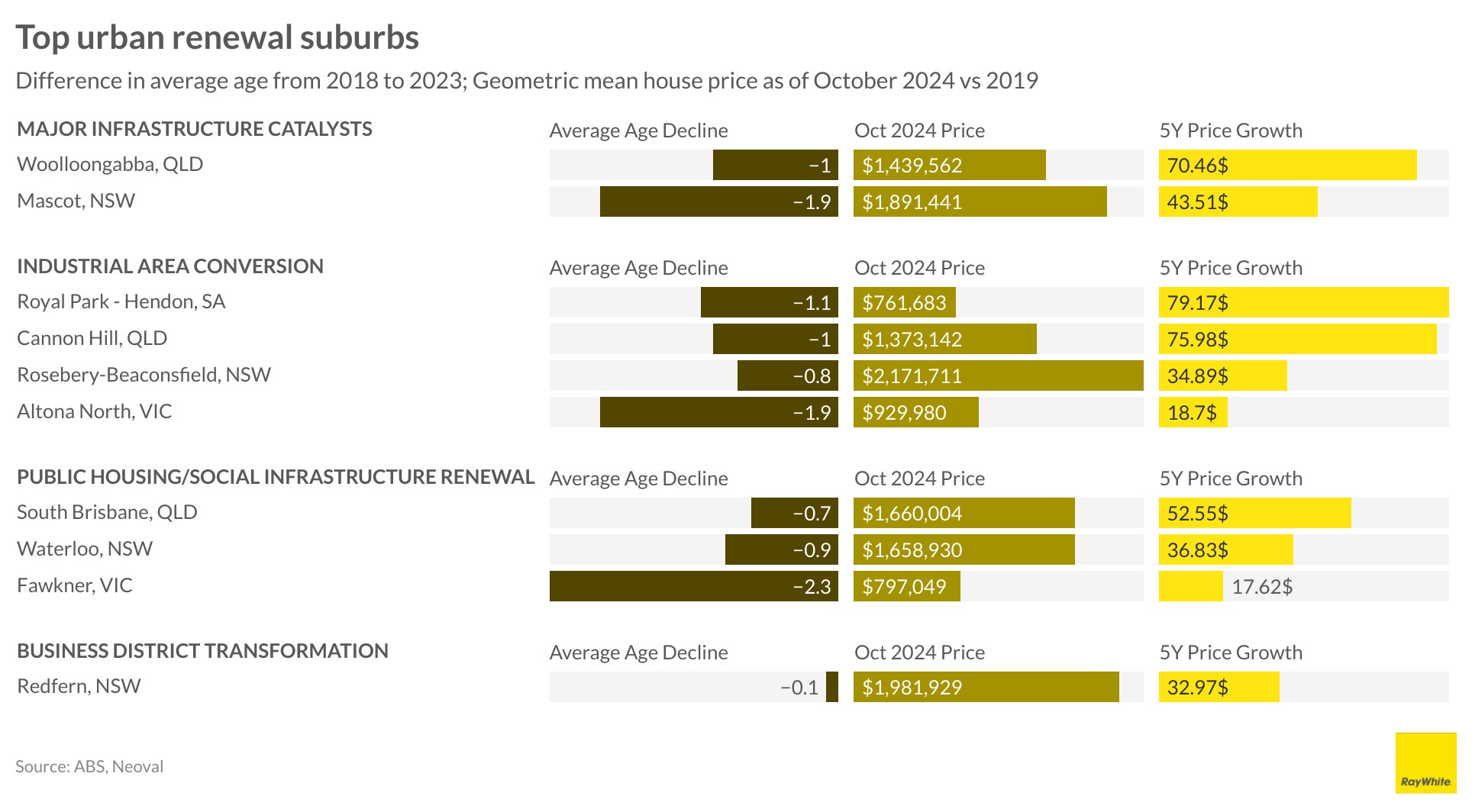Nerida Conisbee
Ray White Group
Chief Economist
What leads to some suburbs being more popular with younger buyers than others?
Suburbs have a pretty standard timeline. New homes are built, young families move in, those families age. Then the next generation moves in. But not all established areas experience the same success in attracting younger residents. But those that do tend to have fairly similar characteristics that increase their attractiveness, resulting in significant urban renewal.
The critical elements that increase attractiveness for younger people are generally consistent. The first is higher density residential development. This creates affordability for younger people wanting to buy and rent in well established suburbs where a house may be out of their reach. The second is great transport infrastructure to make it easier to get around. The third is a strong mixed-use focus, providing such things as a great retail precinct, places to work and recreational spaces.
To establish the list of where urban renewal has been most successful, we looked at established areas that not only have seen a drop in age, but also significant price growth. To further refine, we had a look at some other markers of urban regeneration. These were chosen to be major infrastructure changes, industrial area conversion, social infrastructure renewal and business district transformation. In the end, ten suburbs were chosen as being most successful at urban renewal, thereby attracting young people and seeing higher demand.

MAJOR INFRASTRUCTURE CHANGES
Major infrastructure catalysts, particularly new transport and community facilities, attract younger residents by creating highly connected, amenity-rich neighbourhoods that align with their lifestyle preferences. Projects like Cross River Rail in Woolloongabba and the Airport Line in Mascot significantly improve accessibility to employment hubs, entertainment districts, and urban services, while also spurring the development of new apartments, retail, and dining precincts.
INDUSTRIAL AREA CONVERSION
The conversion of industrial areas into residential and mixed-use precincts can be seen in suburbs like Altona North, Cannon Hill, Royal Park-Hendon and Rosebery-Beaconsfield, offering large parcels of land that can be master planned to include modern apartments, creative spaces, and retail destinations. These areas often retain elements of their industrial heritage that add character and authenticity to these emerging precincts, creating distinctive neighbourhoods with strong identities.
These transformations typically result in significant price advantages compared to established inner-city areas, making them particularly attractive to younger buyers and renters. The wholesale renewal of these areas allows for contemporary urban design that emphasises community spaces, sustainability, and lifestyle amenities, while their industrial past often evolves into a cultural advantage, with warehouses and factories being repurposed into trendy food, entertainment, and creative venues that particularly appeal to younger demographics.
PUBLIC HOUSING/SOCIAL INFRASTRUCTURE RENEWAL
The transformation of areas through social infrastructure renewal, as seen in Waterloo, South Brisbane, and Fawkner, represents a significant shift in how we approach community development. These suburbs are experiencing renewal through the introduction or upgrading of public housing, educational institutions, cultural facilities, and community spaces, creating more diverse and inclusive neighbourhoods. The combination of improved social amenities and new housing options attracts younger residents who value both community connection and urban convenience.
BUSINESS DISTRICT TRANSFORMATION
The transformation of business districts, such as Redfern in Sydney, demonstrates how formerly commercial-centric areas can evolve into vibrant, mixed-use neighbourhoods that attract younger residents. These transformations often involve the reimagining of traditional office precincts into more dynamic spaces that blend work, residential, and lifestyle elements. The shift away from single-use business districts reflects changing preferences in how people want to live and work, particularly among younger demographics who seek integrated environments where the boundaries between work and life are more fluid.
